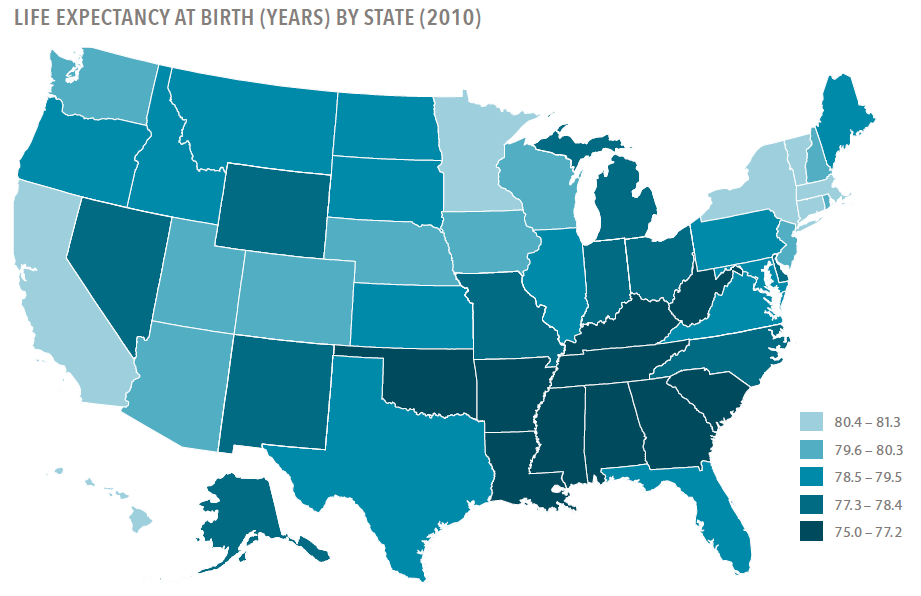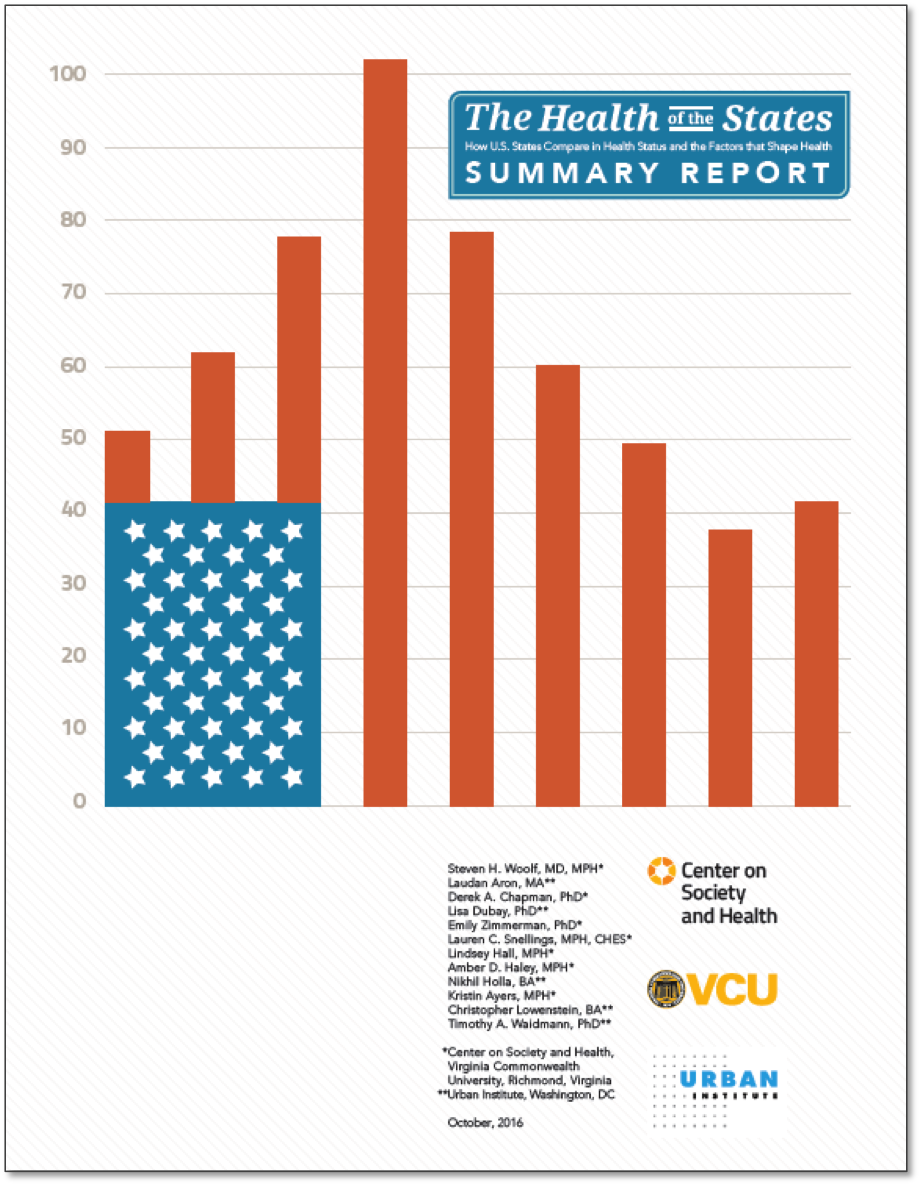In 2020, The Center on Society and Health at Virginia Commonwealth University launched ‘State of Health,’ a website that allows users to interact with state-level data. The aim is to provide a more complete picture of health, as well as the conditions that shape health, within the United States.
The ‘State of Health’ interactive website allows users to explore health statistics and rankings of all 50 states in 84 different health-related categories, such as life expectancy, food insecurity, self-rated health, and more. Armed with this knowledge, our hope is that this information can help policymakers and other change agents better understand the health of the states and conditions that could be prioritized to improve health and wellbeing.
Visit the website at www.stateofhealth.us
Preceding the development of the State of Health website, the Center conducted The Health of the States (HOTS) study–a detailed analysis of state rankings on 39 health outcomes, and correlations between those health outcomes and 123 determinants of health spanning five domains: health care, health behaviors, social and economic factors, the physical and social environment, and public policies and spending. The project was conducted in partnership with the Urban Institute and, with the website, was funded by the Robert Wood Johnson Foundation.
The original study was unprecedented in its breadth and depth – offering a more comprehensive and layered picture of health in every state than any other resource to date. The Summary Report details how states rank on each of 39 health outcomes, allowing each state to see where it is doing well and which diseases deserve greater priority. Perhaps more importantly, readers can also explore the conditions that best correlate with better health.
The series of reports offer a detailed examination of a wide range of drivers of health, looking extensively at health care conditions and health behaviors—such as tobacco use and physical activity—while also studying physical and social conditions in neighborhoods that influence behaviors and health (such as walkability or residential segregation), socioeconomic factors ranging from education and income to incarceration and food insecurity, and per capita spending by states on income support, education, and infrastructure.
 In a series of supplemental
In a series of supplemental
reports, we unpack these findings, presenting dozens of maps and more detailed data on how these factors affect health across the life course, from infancy to old age. These Spotlight reports focus on:
- Life expectancy and mortality
- Birth outcomes
- Child and adolescent health
- Sexually transmitted infections
- Injury fatalities
- Adult health status
- Overweight/obesity, diabetes, and cardiovascular conditions
- Cancer, lower respiratory disease, influenza and pneumonia, and Alzheimer’s disease
To read more about our methods, see The Health of the States: Spotlight on Methods.
